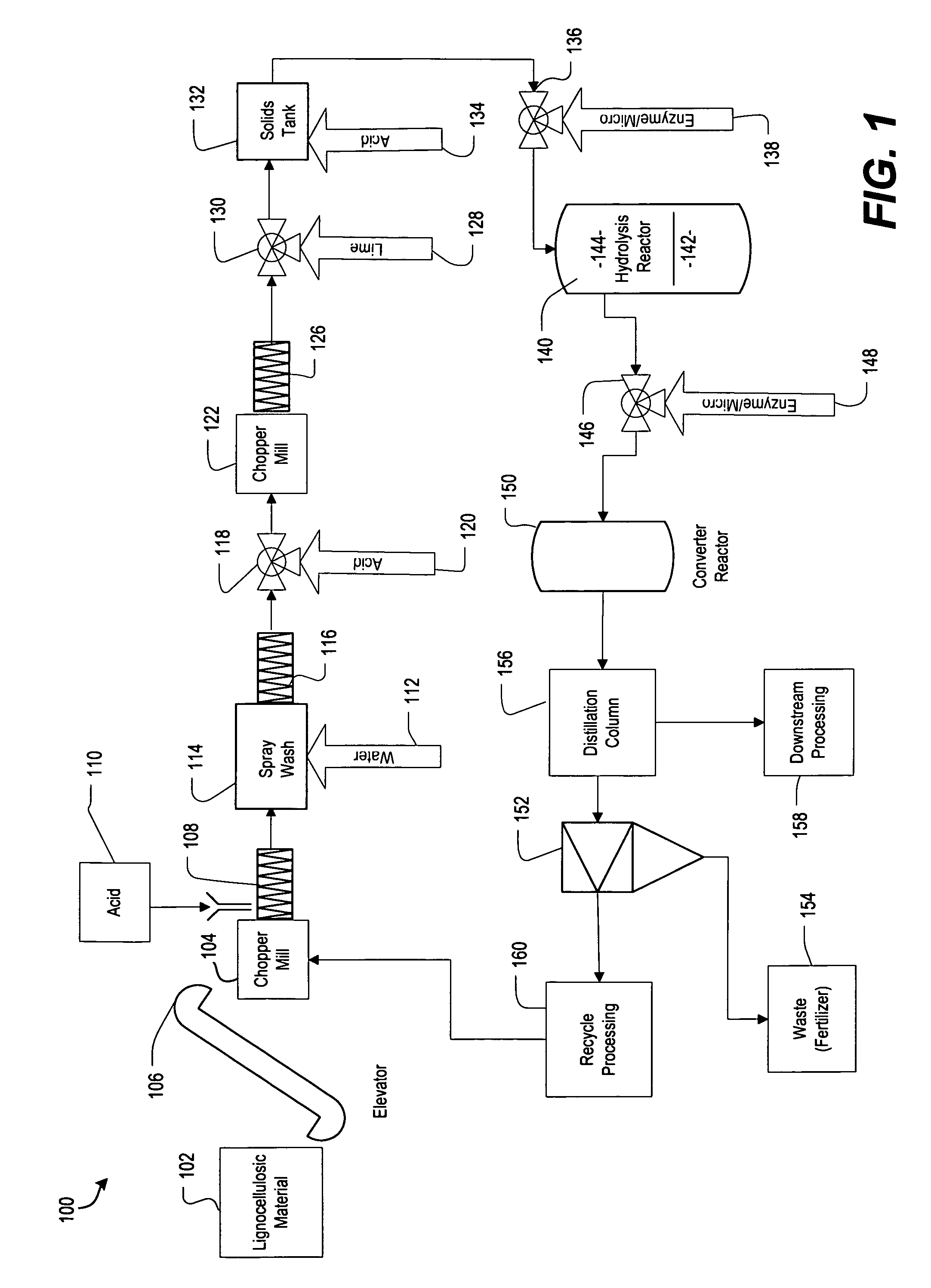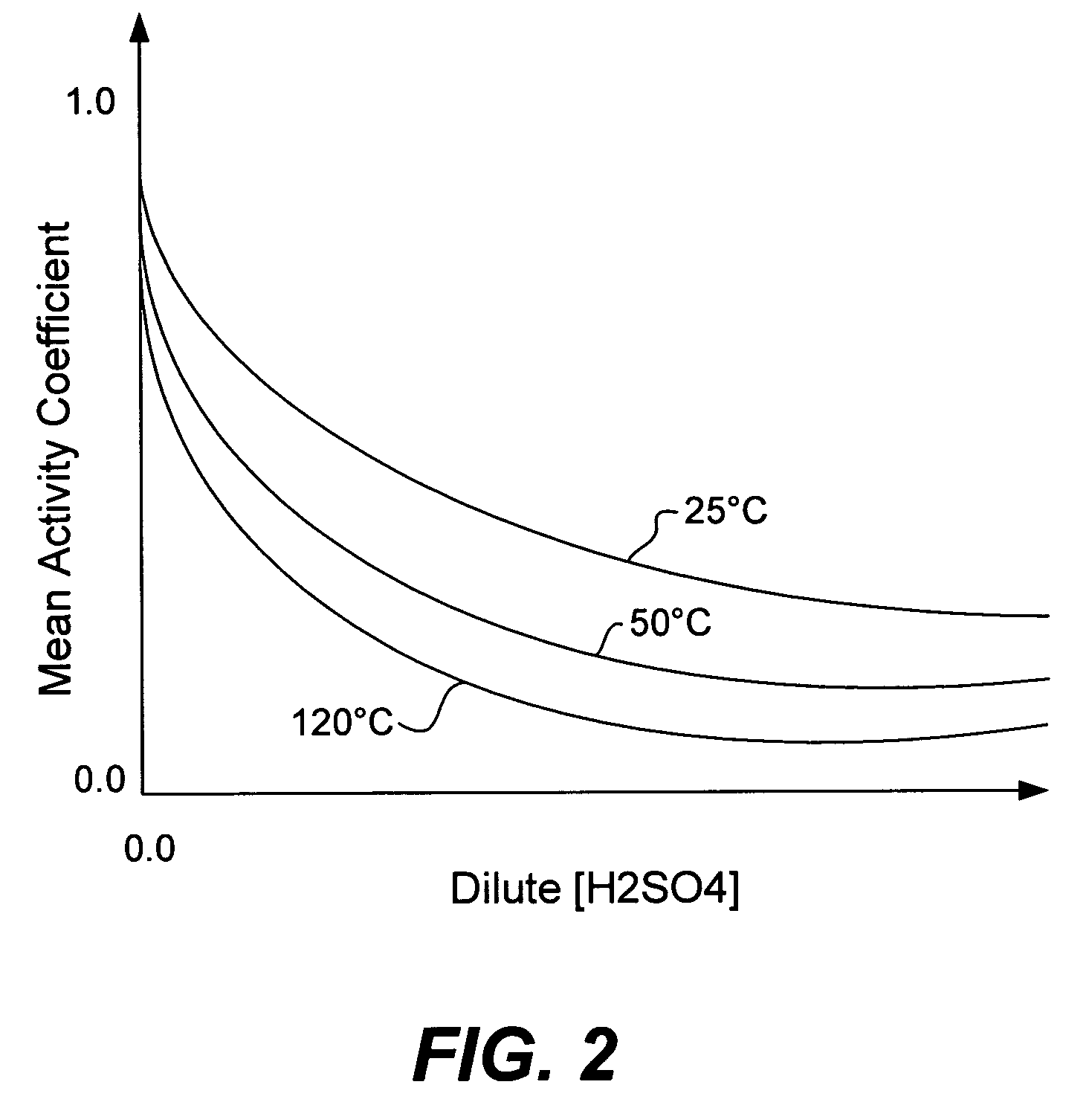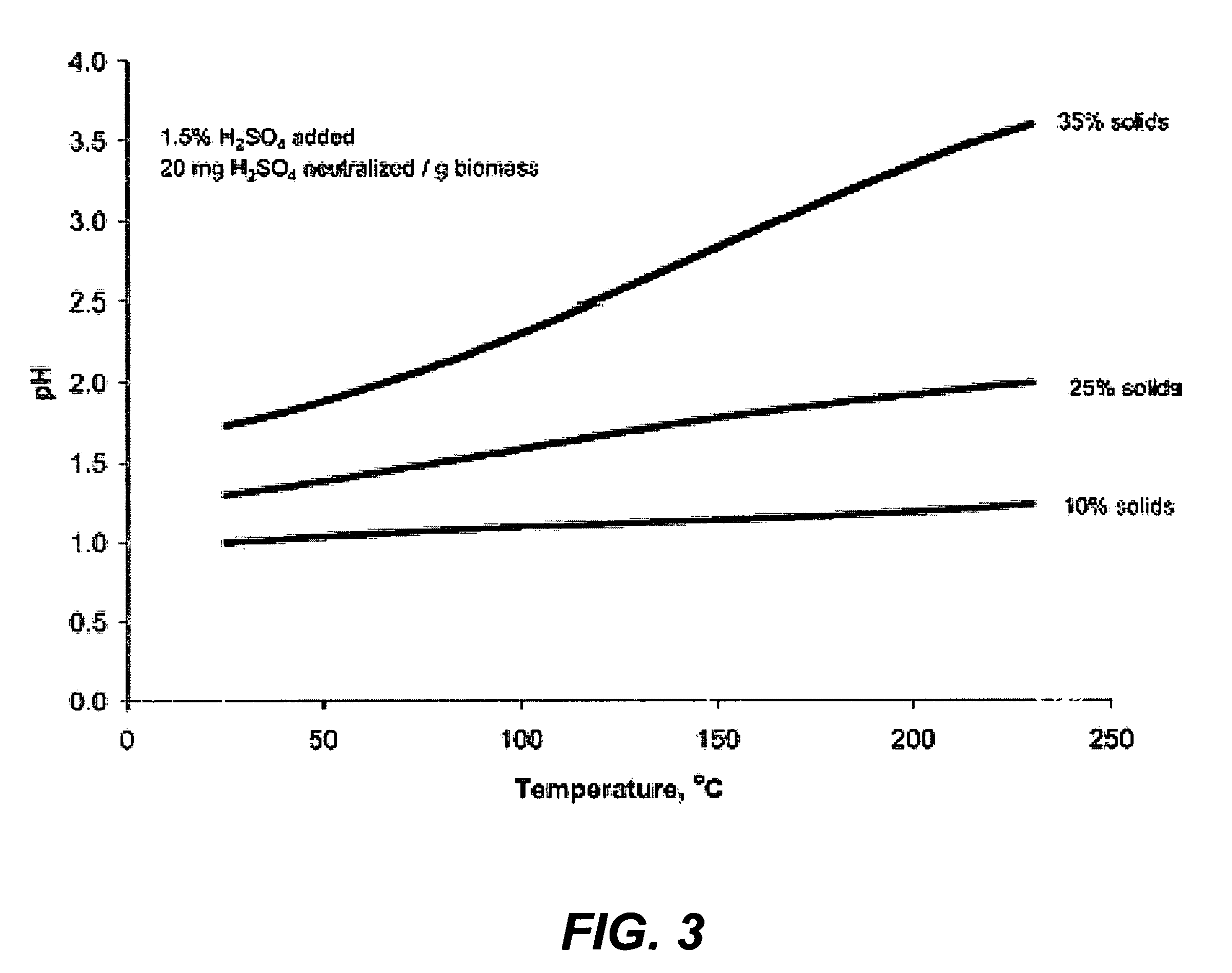Removal of minerals from cellulosic biomass
a technology of cellulosic biomass and minerals, which is applied in the field of processing biomass, can solve the problems of high capital and operating costs of all of these pretreatment methods, high containment costs, and difficulty in introducing solid materials into the reactor
- Summary
- Abstract
- Description
- Claims
- Application Information
AI Technical Summary
Benefits of technology
Problems solved by technology
Method used
Image
Examples
example 1
[0041]Mathematical concepts that, generally, provide a theoretical basis showing that acid pretreatment is beneficially impacted by prewashing the biomass to remove minerals are described below.
[0042]Hemicellulose hydrolysis is assumed to be a first-order homogenous reaction in hemicellulose, where acid catalyzes the conversion of polymeric hemicellulose, HE, into 5-carbon xylose units, X,
[0043]
The rate constant is:
kh=Ae−E / RT (4)
in which the preexponential factor, A, is a function of acid concentration, but the activation energy, E, is considered independent of temperature and acid concentration. This expression can be rewritten to explicitly include the effect of acid concentration:
A=A0Cm (5)
in which C is the acid concentration in percent added prior to hydrolysis, and m is an arbitrary constant that varies with the type of biomass being pretreated. Equations 4 and 5 can be combined to give:
kh=A0Cme−E / Rt (6)
Typical values of m of between about 0.4 and 1.6 have ...
example 2
Analysis of Neutralization, Bisulfate Formation and Temperature on Hemicellulose Hydrolysis
[0065]Several different concentrations of biomass solids are added to a 1.5% H2SO4 solution and treated over a temperature range of 25-160° C. It is known that 20 mg of sulfuric acid is neutralized per g of dry biomass, and pH, defined as pH=−Log10αH+ is taken as the measure of hydrogen ion concentration. FIG. 3 illustrates how pH varies with temperature based on Equation 25 at 10, 25 and 35% solids concentration, and hence three different neutralization product (sulfate salt) concentrations. A sharp rise in pH with increasing temperature in the presence of neutralization products occurs owing to formation of bisulfate ion via Equation 2 and the impact of temperature on hydrogen ion activity via Equation 25. The pH rises about 0.15 units for a solids loading of 10% and about 1.2 units for a solids loading of 35%, corresponding to about a 29 and a 94% reduction in hydrogen ion activity, respect...
example 3
Mineral Wash of a Biomass
[0068]Mineral washing may, for example, be performed using a dilute acid solution that solubilizes the minerals. In one particular embodiment, a dilute sulfuric acid wash solubilizes minerals in the biomass. Removal of the wash solution eliminates bisulfate, which would, if otherwise left present in the biomass, have a buffering effect and require the addition of significantly more acid for satisfactory acidification results. As shown by way of example in FIG. 6, system modifications may be made to perform this prewashing step prior to any acidification. These instrumentalities permit the use of dilute acid or other mineral-removing washes with special advantage. It will be appreciated that a wide-ranging variety of biomass conversion processes utilize acidification, and all such processes may benefit from the prewashing step to remove minerals as described herein.
[0069]Milled cellulosic biomass is contacted by a dilute acid solution by any number of methods...
PUM
| Property | Measurement | Unit |
|---|---|---|
| temperature | aaaaa | aaaaa |
| particle sizes | aaaaa | aaaaa |
| particle sizes | aaaaa | aaaaa |
Abstract
Description
Claims
Application Information
 Login to View More
Login to View More - R&D
- Intellectual Property
- Life Sciences
- Materials
- Tech Scout
- Unparalleled Data Quality
- Higher Quality Content
- 60% Fewer Hallucinations
Browse by: Latest US Patents, China's latest patents, Technical Efficacy Thesaurus, Application Domain, Technology Topic, Popular Technical Reports.
© 2025 PatSnap. All rights reserved.Legal|Privacy policy|Modern Slavery Act Transparency Statement|Sitemap|About US| Contact US: help@patsnap.com



